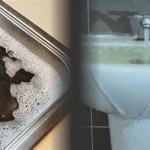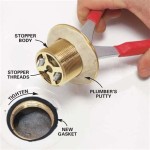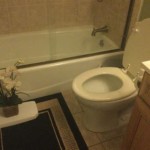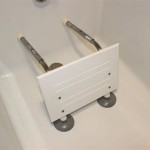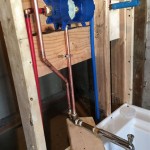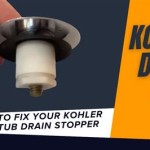How to Unclog a Bathtub Drain Pipe
A clogged bathtub drain can be a frustrating inconvenience, turning a relaxing bath into a messy chore. The culprit behind this blockage is often a buildup of hair, soap scum, and other debris that accumulates over time. Fortunately, unclogging a bathtub drain is a relatively straightforward task that can be tackled with a few simple tools and techniques. This article will guide you through the process step-by-step, empowering you to restore the flow of your bathtub drain.
1. Identify the Source of the Clog
Before attempting any unclogging methods, it's essential to determine the source of the blockage. Observe the drain and identify any visible signs of accumulated debris, such as hair, soap scum, or other foreign objects. If the drain is emitting a foul odor, it could indicate a deeper blockage in the drainpipe. In such cases, it's best to consult a professional plumber.
2. Utilize a Plunger
A plunger is a common and effective tool for unclogging bathtub drains. To use a plunger effectively, follow these steps:
- Prepare the area: Clear the area around the bathtub drain and ensure the drain stopper is removed.
- Position the plunger: Place the plunger firmly over the drain opening, creating a tight seal. Ensure the plunger's cup fully covers the drain opening.
- Apply pressure: Push and pull the plunger vigorously, creating a suction force that will dislodge the clog.
- Repeat and check: Continue plunging for several minutes and then check if the water is draining freely. If not, repeat the process.
3. Employ a Drain Snake
If a plunger fails to unclog the drain, a drain snake might be the solution. A drain snake is a flexible cable with a hook or a spiral tip that can be inserted into the drainpipe to break up clogs.
- Insert the drain snake: Feed the snake into the drainpipe, rotating it as you push it forward. The hook or spiral will catch and break up the clog.
- Advance and retrieve: Slowly advance the snake into the drainpipe, feeling for resistance. Once you encounter the clog, twist the snake to break it up. After removing the snake, flush the drain with hot water to clear any remaining debris.
- Repeat as needed: If the clog remains, you may need to repeat the process with the drain snake. If the clog is severe or the snake fails to dislodge it, it's advisable to contact a professional plumber.
4. Preventive Measures
Once you've successfully unclogged your bathtub drain, it's crucial to implement preventive measures to avoid future clogs. Here are some tips:
- Regular cleaning: Clean your bathtub drain regularly using a drain cleaner or a mixture of baking soda and vinegar. This helps prevent hair and other debris from accumulating and clogging the drain.
- Hair catcher: Install a drain strainer or a hair catcher to prevent hair and other debris from entering the drainpipe.
- Avoid pouring grease: Never pour grease or oil down the bathtub drain. These substances solidify and contribute to drain clogs.
By understanding the causes of bathtub drain clogs, employing the right tools, and implementing preventive measures, you can keep your bathtub drain flowing freely. If you encounter persistent or severe clogs, it's best to seek professional help from a plumber.

5 Easy Ways To Unclog Bathtub Drain

How To Unclog Bathtub Drain Pipes Save 200 In Two Minutes

Top 5 Tips On How To Unclog A Bathtub Drain Smiley Cleaning

How To Easily Unclog Bathtub Shower Drain In 5 Minutes Jonny Diy

How To Unclog A Bathtub Drain Without Chemicals Family Handyman

How To Unclog A Bathtub Drain 11 Diy Clog Busters

How To Unclog A Bathtub Drain Without Chemicals

How To Unclog A Bathtub Drain 11 Diy Clog Busters

How To Unclog A Bathtub Drain Without Chemicals

How To Unclog A Bathtub Drain Without Chemicals Family Handyman


